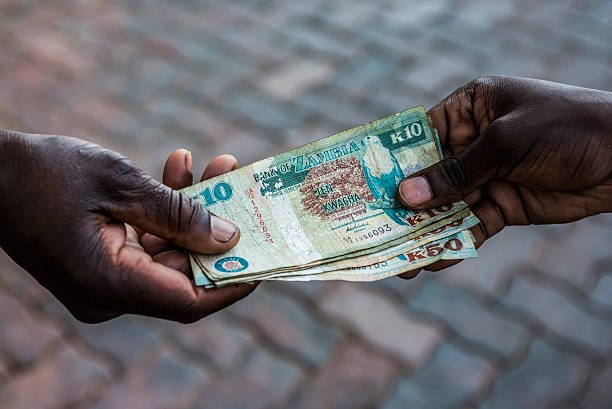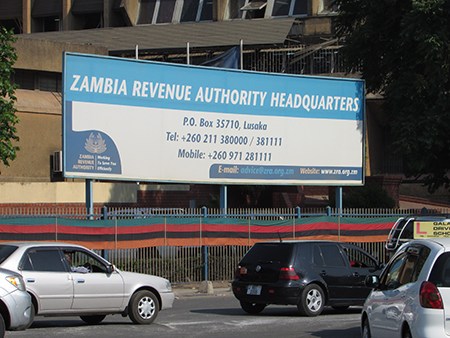• The Monetary Policy Committee took into account the actual annual average inflation of 9.6% in quarter one.
• BoZ projection is that inflation rate would continue to be above the target range of 6 to 8 percent over the next eight quarters.
• In the first quarter of 2025, inflation rate is projected to remain at 8.4 percent.
Bank of Zambia has raised its Monetary Policy Rate by 25 basis points from 9.25% in the first quarter of 2023 to 9.50 percent.
Speaking at the quarterly media briefing, Bank Governor Dr. Denny Kalyalya said in arriving at the decision, the Monetary Policy Committee (MPC) took into account the actual annual average inflation of 9.6% in quarter one of the year.
Dr. Kalyalya stated that the Central Bank’s projection is that inflation rate would continue to be above the target range of 6 to 8 percent over the next eight quarters, despite recording a decline.
He added that the Committee also considered factors such as fragile economic growth, vulnerabilities and risks in the financial sector as well as potential benefits from the successful conclusion of external debt restructuring negotiations, and higher maize prices due to anticipated lower production.
“Impact of the Russia-Ukraine war on food and energy prices, protracted debt restructuring negotiations as well as higher maize prices due to anticipated lower production amidst demand, remain key upside risks to the inflation outlook.”
“Observed budgetary discipline and continued implementation of fiscal consolidation measures as well as broader economic reforms outlined in the Eighth National Development Plan will remain important anchors in achieving lower inflation level and macroeconomic stability,” Dr. Kalyalya said.
He noted that inflation marginally declined in the first quarter of 2023 but remained elevated and is expected to stay above the target range of 6 to 8 percent over forecast horizon.
“In the first quarter, inflation average 9.6 percent compared to 9.8 percent in the fourth quarter of 2022. Dissipation of base effects in a broad range of items in the consumer basket and sustained reduction in the prices of oils and fats, due to lower costs of imported inputs were the key drivers. In April 2023, inflation rose to 10.4 percent from 9.9 percent in March. This was largely driven by the strong regional demand for maize grain and maize meal and the lagged-pass through from the depreciation of the Kwacha against the US dollar.”
“The Inflationary pressures observed in April are expected to persist over the forecast horizon and keep inflation above the target band despite declining slightly relative to the February 2023 forecast. Underpinning the current forecast are largely the impact of the recently approved electricity tariffs and elevated maize prices particularly in 2023. In this regard, inflation in 2023 and 2024 is projected to average 10.4 percent and 8.4 percent compared to 11.1 percent and 10.5 percent in the February 2203 forecast respectively. In the first quarter of 2025, inflation rate is projected to remain at 8.4 percent,” he explained.
With regards to the Kwacha, Dr. Kalyalya said the local unit depreciated by 16.8 percent to an average of K19.52 against the United States dollar in the first quarter of 2023.
He attributed the weakening of the currency in the quarter under review to high US dollar demand, adverse market sentiments associated with protracted external debt restructuring process and tighter global financial markets condition.
Dr. Kalyalya explained that the Central Bank provided US$377 million to support the market in meeting some critical imports such as fuel and agricultural inputs of which US$186 million was from mining tax receipts.
“In April 2023, the Kwacha appreciated against the US dollar by 16.8 percent to 17.73, mostly driven by improved supply of foreign exchange from quarterly corporate tax obligations. The reaching of the First Level Agreement on the first review of the International Monetary Fund Extended Credit Facility arrangement (IMF ECF) arrangement created expectations that external debt restructuring would soon be concluded. This positively changed market sentiments and also contributed to the appreciation of the Kwacha.”
“Pressures in the foreign exchange market have however re-emerged mostly due to excess demand for foreign exchange from a broad range of sectors, chief among them the wholesale and retail, financial as well as electricity, gas and water supply. As at May 16 ,2023, the Kwacha was trading at K18.53 per US dollar,” he noted.







